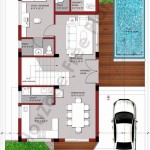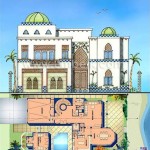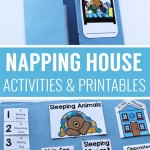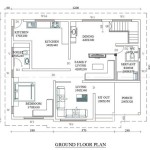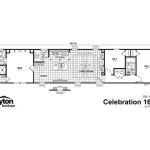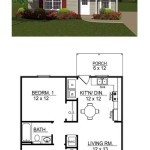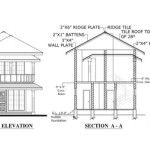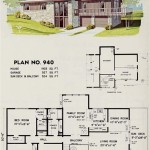Exploring the Benefits of Home Plans in 3D
The process of designing a home can be a complex undertaking, requiring careful consideration of spatial arrangements, aesthetic appeal, and functional requirements. Traditional methods, such as 2D blueprints, have long been the standard for visualizing and communicating design ideas. However, advancements in technology have led to the increasing adoption of 3D home plans, offering a more immersive and comprehensive understanding of the proposed living space. This article explores the advantages of utilizing 3D home plans, examining how they enhance visualization, improve design communication, and minimize potential errors.
A 3D home plan is a digital representation of a house that allows for viewing it from different angles, both inside and outside. Unlike traditional 2D blueprints, which are schematic drawings that require interpretation, 3D models provide a realistic and intuitive depiction of what the finished home will look like. This level of visual clarity is particularly beneficial for clients who may not have experience reading architectural drawings, enabling them to fully comprehend the design and provide informed feedback.
The creation of 3D home plans involves specialized software and skilled designers who can accurately model the building's structure, interior layouts, and exterior features. These models can incorporate details such as furniture placement, material selection, and lighting, providing a holistic view of the home's aesthetic and functional characteristics. The ability to virtually walk through the space before construction begins offers unparalleled insight and allows for early identification of potential design flaws or areas for improvement.
Enhanced Visualization and Understanding
One of the primary benefits of 3D home plans is the enhancement of visualization. 2D blueprints, while providing essential technical information, can be challenging for individuals without architectural training to interpret. Understanding spatial relationships, room dimensions, and overall flow from flat drawings requires a certain level of abstraction. 3D models, on the other hand, offer a realistic and intuitive representation of the proposed home, allowing clients to easily grasp the design concept and visualize themselves living in the space.
The ability to see the home from different perspectives, including bird's-eye views, interior perspectives, and even simulated walkthroughs, greatly enhances the understanding of the design. Clients can explore the layout of rooms, observe the impact of natural light, and assess the overall aesthetic appeal of the home. This level of visual clarity allows for more informed decision-making and reduces the likelihood of misunderstandings or surprises during the construction phase.
Furthermore, 3D home plans can be easily shared and viewed on various devices, including computers, tablets, and smartphones. This accessibility allows clients to review the design at their convenience and share it with family members or other stakeholders for feedback. The ability to collaborate remotely and discuss design options in a visually rich environment streamlines the decision-making process and ensures that everyone is on the same page.
The level of detail achievable in 3D home plans also contributes to enhanced visualization. Designers can incorporate realistic textures, colors, and materials, providing a true-to-life representation of the finished home. This level of realism allows clients to assess the aesthetic impact of different design choices and make informed decisions about material selection, color schemes, and furniture options.
Improved Communication and Collaboration
Effective communication is crucial throughout the home design and construction process. 3D home plans serve as a powerful communication tool, bridging the gap between architectural drawings and the client's vision. By providing a clear and intuitive representation of the design, 3D models facilitate meaningful conversations and ensure that all parties are aligned on the project goals.
Architects and designers can use 3D home plans to effectively communicate their design ideas to clients, builders, and other stakeholders. The visual clarity of the models allows for easy understanding and minimizes the risk of misinterpretations. This is particularly important when discussing complex aspects of the design, such as structural elements, mechanical systems, or interior layouts.
Collaboration between designers, builders, and clients is also enhanced by the use of 3D home plans. The models provide a shared understanding of the project scope and allow for collaborative problem-solving. For example, if a client has concerns about the placement of windows or the size of a room, the designer can easily adjust the model in real-time and demonstrate the impact of the changes. This iterative process ensures that the final design meets the client's needs and expectations.
Furthermore, 3D home plans can be used to create photorealistic renderings that showcase the home's exterior and interior from different angles. These renderings can be used for marketing purposes, allowing potential buyers to visualize the finished product and appreciate its aesthetic qualities. The ability to showcase the home in a visually appealing manner can be a significant advantage in the competitive real estate market.
Minimizing Errors and Reducing Costs
One of the most significant advantages of 3D home plans is the ability to identify and resolve potential design flaws before construction begins. By virtually building the home in a digital environment, designers can detect clashes between structural elements, identify potential plumbing or electrical issues, and assess the overall functionality of the layout. This early detection of errors can save significant time and money during the construction phase.
Traditional 2D blueprints can be prone to inaccuracies and misinterpretations, leading to costly mistakes during construction. For example, if a wall is incorrectly dimensioned on the blueprint, it may not be discovered until the wall is actually built, requiring demolition and reconstruction. 3D home plans, with their precise measurements and realistic representation, minimize the risk of such errors. The ability to virtually walk through the home and inspect every detail allows for early identification of potential problems.
Furthermore, 3D home plans can be used to optimize the use of materials and reduce waste. By accurately modeling the building's structure and dimensions, designers can calculate the exact amount of materials needed for construction. This minimizes the risk of overordering or underordering materials, reducing waste and saving money. The ability to visualize the home in 3D also allows for optimization of the layout, minimizing the need for unnecessary structural elements or complex designs.
The use of 3D home plans can also lead to improved communication between the designer, builder, and client, reducing the likelihood of misunderstandings and disputes. By providing a clear and comprehensive representation of the design, the model serves as a reference point for all parties involved in the project. This ensures that everyone is on the same page and that the construction process proceeds smoothly.
In complex home designs, the benefits of using 3D home plans are magnified. Intricate rooflines, curved walls, or unusual layouts can be difficult to visualize using traditional blueprints. 3D models provide a clear and intuitive representation of these complex features, allowing for accurate construction and minimizing the risk of errors. The ability to virtually explore the space and identify potential challenges before construction begins is invaluable in ensuring a successful outcome.
In conclusion, the utilization of 3D home plans offers numerous advantages throughout the home design and construction process. From enhanced visualization and improved communication to minimized errors and reduced costs, 3D models provide a comprehensive and intuitive way to represent and understand the proposed living space. As technology continues to advance, the adoption of 3D home plans is likely to become increasingly prevalent, transforming the way homes are designed and built.

3d Floor Plans

Sweet Home 3d Draw Floor Plans And Arrange Furniture Freely

Sweet Home 3d Draw Floor Plans And Arrange Furniture Freely

What Is 3d Floor Plan How To Make It Benefits Cost

3d Floor Plans Images Browse 68 629 Stock Photos Vectors And Adobe

1000 3d Floor Plans And Home Design Ideas To Build Free Plan House Imagination Shaper

3d Floor Plan At Best In Ernakulam Id 18260237962

3d Floor Plans Renderings Visualizations Fast Delivery

Top Home Construction Design Cedreo

Your Home In 3d Plan And Visualize Space

